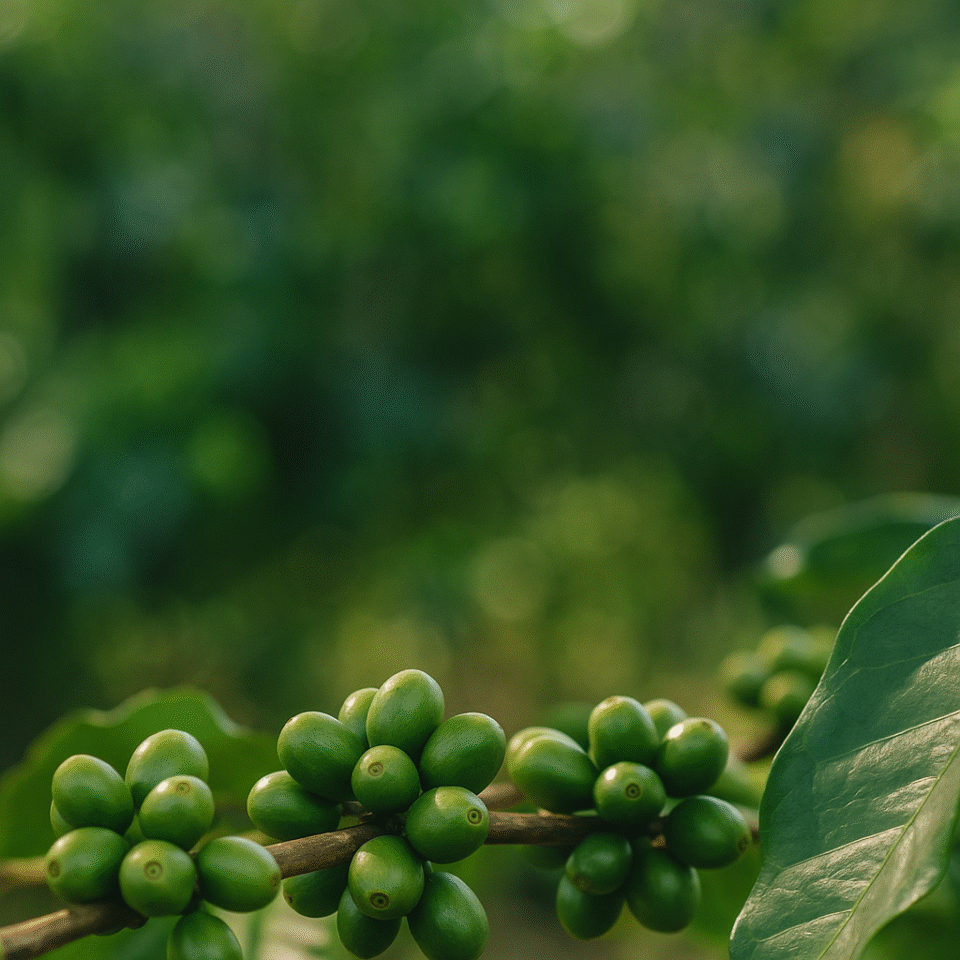دبي – قهوة ورلد
شهدت الأسواق العالمية للقهوة في سبتمبر 2025 تقلبات حادة نتيجة تداخل العوامل الاقتصادية والسياسية والتنظيمية التي أثرت بشكل مباشر على حركة الأسعار وثقة المستثمرين. وأشار تقرير المنظمة الدولية للقهوة (ICO) لشهر سبتمبر إلى أن السوق العالمية تأثرت بثلاثة محاور رئيسية: استمرار الرسوم الجمركية الأمريكية المرتفعة على القهوة، وتخفيض مجلس الاحتياطي الفيدرالي الأمريكي لسعر الفائدة، والتطورات المتعلقة بلائحة إزالة الغابات الأوروبية (EUDR)، وهي عوامل مجتمعة جعلت المشهد التجاري أكثر تعقيدًا وتذبذبًا.
بدأ الشهر بحالة من الترقب في الأسواق بعد أن قررت الولايات المتحدة الإبقاء على الرسوم الجمركية بنسبة 50% على القهوة المستوردة، رغم إصدار أمر تنفيذي في 8 سبتمبر يقضي بإعفاء عدد من السلع من هذه الرسوم. غير أن القهوة لم تكن ضمن قائمة الإعفاءات، إذ لا تعتبر سلعة يمكن إنتاجها محليًا بكميات تلبي الطلب الداخلي. وأثار هذا القرار قلقًا واسعًا بين المستوردين والمحمصين الأمريكيين، خصوصًا في ظل محدودية المعروض العالمي وارتفاع تكاليف النقل والتخزين.
وأوضح التقرير أن هذه الرسوم أضعفت وتيرة الصادرات من الدول المنتجة، ولا سيما البرازيل، التي تعد أكبر مصدر للقهوة في العالم. فإلى جانب تكلفة الرسوم نفسها، واجه المصدرون تحديات إضافية مثل ارتفاع تكاليف التأمين وتأخر عمليات الشحن. ووفق بيانات مجلس مصدّري القهوة البرازيلي (Cecafé)، انخفضت صادرات البرازيل إلى الولايات المتحدة بنسبة 46% مقارنة بالعام الماضي و26% مقارنة بشهر أغسطس، رغم أن السوق الأمريكية تظل ثاني أكبر وجهة للقهوة البرازيلية بعد ألمانيا.
ومع ذلك، حمل النصف الثاني من سبتمبر مؤشرات إيجابية بعد لقاءات جمعت مسؤولين من الولايات المتحدة والبرازيل على هامش اجتماعات الجمعية العامة للأمم المتحدة في نيويورك، والتي اعتُبرت خطوة أولى نحو تخفيف التوتر التجاري بين البلدين. وعلى الرغم من عدم الإعلان عن أي تغيير رسمي، فقد فسّر المحللون تلك المحادثات بأنها بداية محتملة لإعادة النظر في الرسوم المفروضة على القهوة خلال الأشهر المقبلة، خاصة إذا استمر التضخم في الولايات المتحدة في التراجع.
في منتصف الشهر، دخل عامل جديد إلى المشهد المالي بعد أن أعلن الاحتياطي الفيدرالي الأمريكي في 17 سبتمبر عن خفض سعر الفائدة بمقدار 25 نقطة أساس — وهو أول تخفيض منذ مطلع عام 2024 — في محاولة لتحفيز الاقتصاد بعد تباطؤ في الإنفاق الاستهلاكي وتراجع الإنتاج الصناعي. وقد انعكس هذا القرار بشكل مزدوج على سوق القهوة؛ إذ شجع انخفاض تكاليف الاقتراض على زيادة النشاط الاستثماري والمضاربات في أسواق السلع، ما أدى إلى دعم الأسعار، بينما أدى في المقابل إلى ارتفاع قيمة الدولار الأمريكي، مما جعل شراء القهوة أكثر تكلفة للمستوردين في الأسواق الناشئة.
وأشار تقرير المنظمة إلى أن مؤشر التذبذب اليومي للأسعار المركبة (I-CIP) ارتفع إلى 13.8% في سبتمبر، مقارنة بـ11% في أغسطس، نتيجة التفاعل بين العوامل النقدية والتجارية. وأكدت المنظمة أن هذه التقلبات لا تعكس المضاربات فحسب، بل أيضًا القلق الحقيقي بشأن مستقبل التدفقات التجارية واللوائح التنظيمية التي تعيد تشكيل تجارة القهوة عالميًا.
وفي أوروبا، واجهت الأسواق نوعًا مختلفًا من الضبابية التنظيمية، بعدما أعلن مفوض الاتحاد الأوروبي لشؤون البيئة والمحيطات والمصايد عن احتمال تأجيل تطبيق لائحة إزالة الغابات (EUDR) لمدة عام إضافي. وجاء هذا التصريح بعد إقرار المفوض بأن المنصة الرقمية الأوروبية المسؤولة عن تتبع سلاسل التوريد غير جاهزة بالكامل لاستقبال البيانات المطلوبة من الشركات الموردة قبل الموعد المقرر للتطبيق في يناير 2026.
ورحّبت الدول المنتجة للقهوة بهذا الاحتمال، إذ ترى فيه فرصة لإعادة ترتيب أنظمتها الخاصة بتتبع المنشأ وتعزيز الشفافية قبل بدء تنفيذ اللائحة. وتنصّ لائحة إزالة الغابات الأوروبية (EUDR) على إلزام الشركات المستوردة إلى الاتحاد الأوروبي بإثبات أن منتجاتها لا تساهم في إزالة الغابات أو تدهور النظم البيئية، من خلال تقديم بيانات دقيقة عن مصدر المحصول وإحداثيات كل مزرعة. غير أن العديد من الدول المنتجة، مثل إثيوبيا وأوغندا وهندوراس، حذّرت من أن صغار المزارعين قد يواجهون صعوبة في الامتثال الكامل لهذه المتطلبات التقنية، مما قد يؤدي إلى إقصائهم من الأسواق الأوروبية مستقبلاً.
وأشارت المنظمة الدولية للقهوة إلى أن تأجيل تنفيذ اللائحة المحتمل يوفر مهلة إضافية للبلدان المصدّرة لتقوية نظم التتبع والمراقبة، لكنه لا يغيّر من حقيقة أن الأسواق الأوروبية تتجه بثبات نحو تشديد المعايير البيئية. واعتبرت أن الدول التي لا تستثمر في نظم الاستدامة والشفافية الزراعية قد تفقد موقعها في أهم أسواق القهوة عالميًا خلال السنوات المقبلة.
وفي ختام الشهر، عكست المؤشرات استمرار حالة عدم الاستقرار في السوق العالمية، حيث بلغ المؤشر المركب لأسعار القهوة 324.62 سنتًا أمريكيًا للرطل، مرتفعًا بنسبة 9.3% مقارنة بأغسطس — وهو أعلى مستوى منذ عامين. ومع ذلك، تختلف الصورة من منطقة لأخرى؛ ففي حين استفادت فيتنام وكولومبيا من الطلب القوي وتكاليف الشحن التنافسية، واجهت البرازيل ودول أمريكا الوسطى ضغوطًا بسبب ارتفاع تكاليف التصدير والتحديات السياسية المرتبطة بالتجارة.
واختتمت المنظمة الدولية للقهوة تقريرها بالتأكيد على أن السوق العالمية للقهوة دخلت مرحلة جديدة من التحول الهيكلي، حيث باتت الأسعار تتأثر ليس فقط بالعرض والطلب، بل أيضًا بالقرارات السياسية والسياسات النقدية والأنظمة التنظيمية التي تحدد مسار التجارة. ومع اقتراب الربع الأخير من عام 2025، من المتوقع أن تظل الأسعار مرتفعة، بينما يختبر المنتجون والتجار قدرتهم على التكيف مع واقع أكثر تعقيدًا، تتداخل فيه الاعتبارات الاقتصادية بالالتزامات البيئية.
إن فنجان القهوة اليوم لم يعد مجرد سلعة استهلاكية، بل أصبح مرآة للتوازن بين السياسة والاقتصاد والاستدامة في مشهد عالمي متغير.
